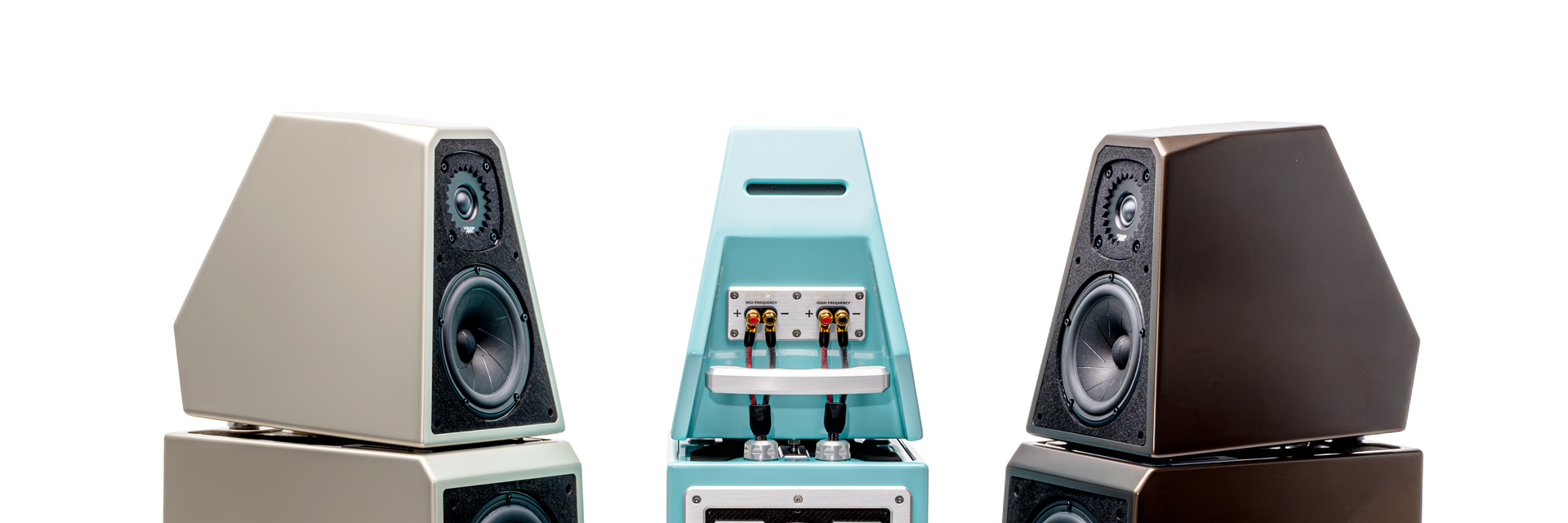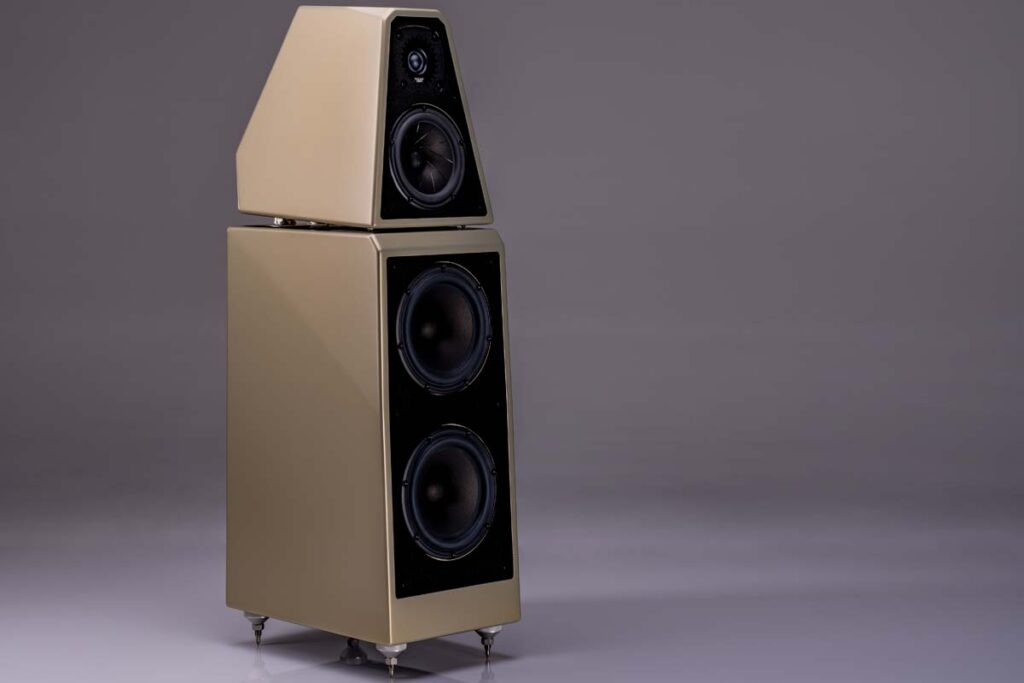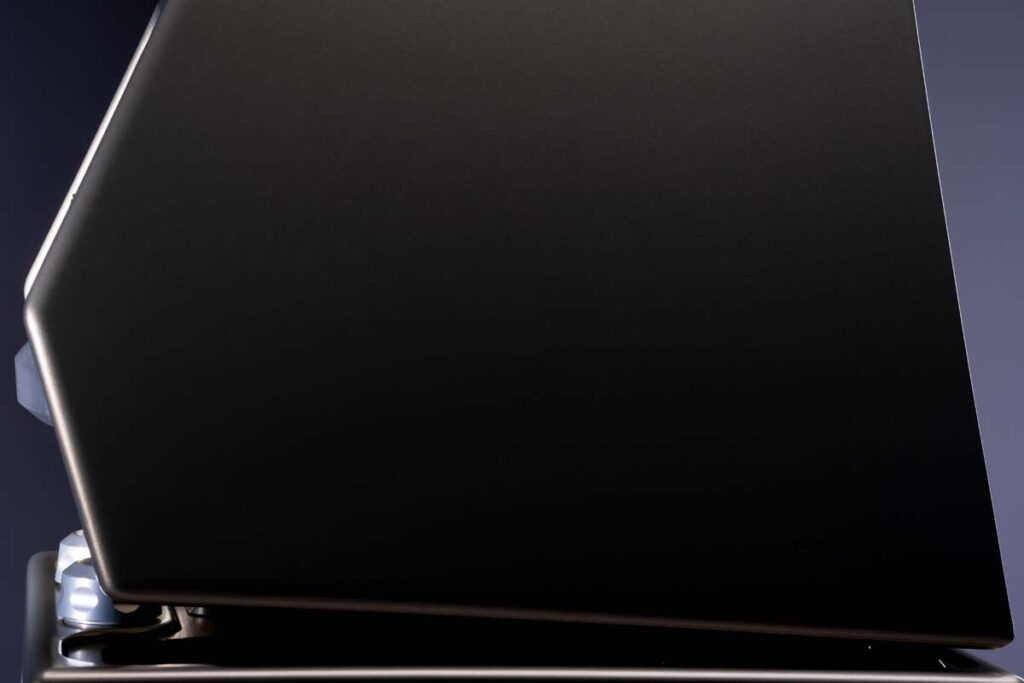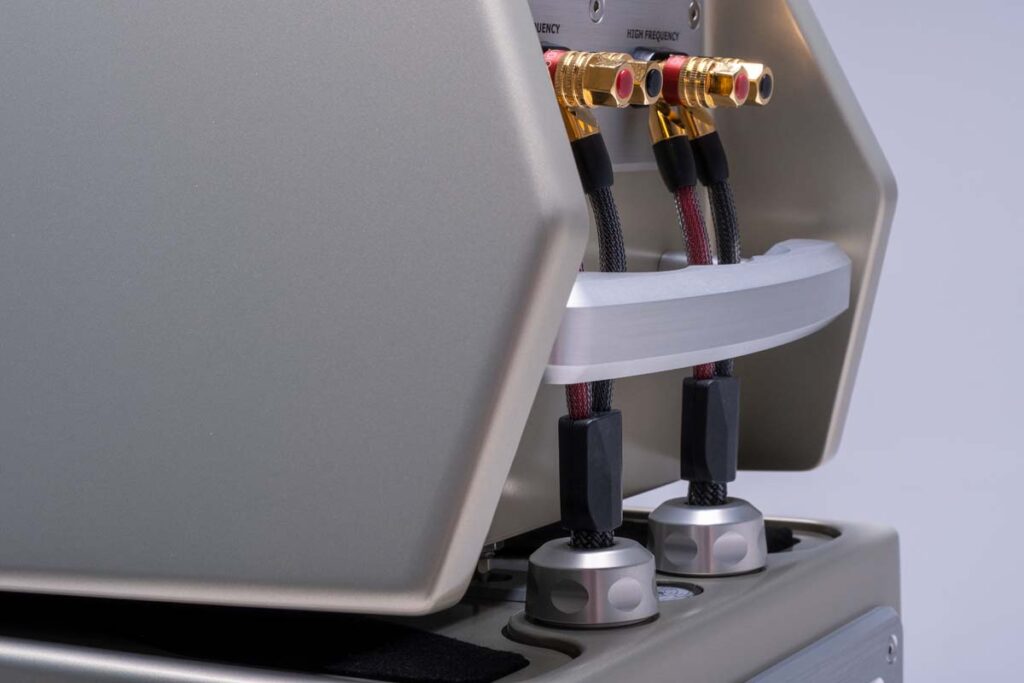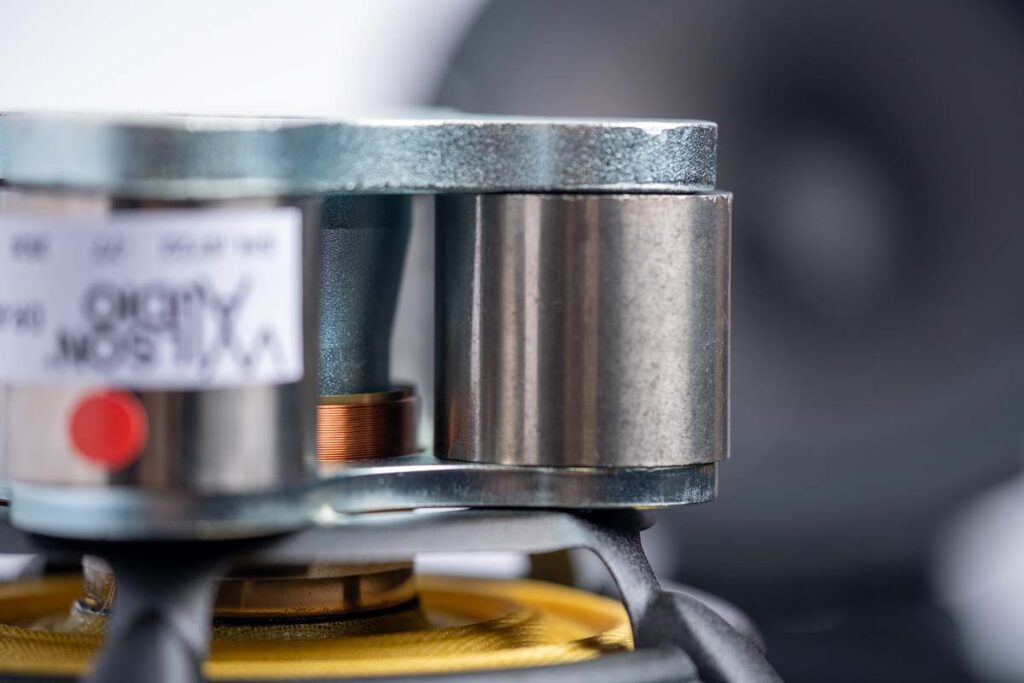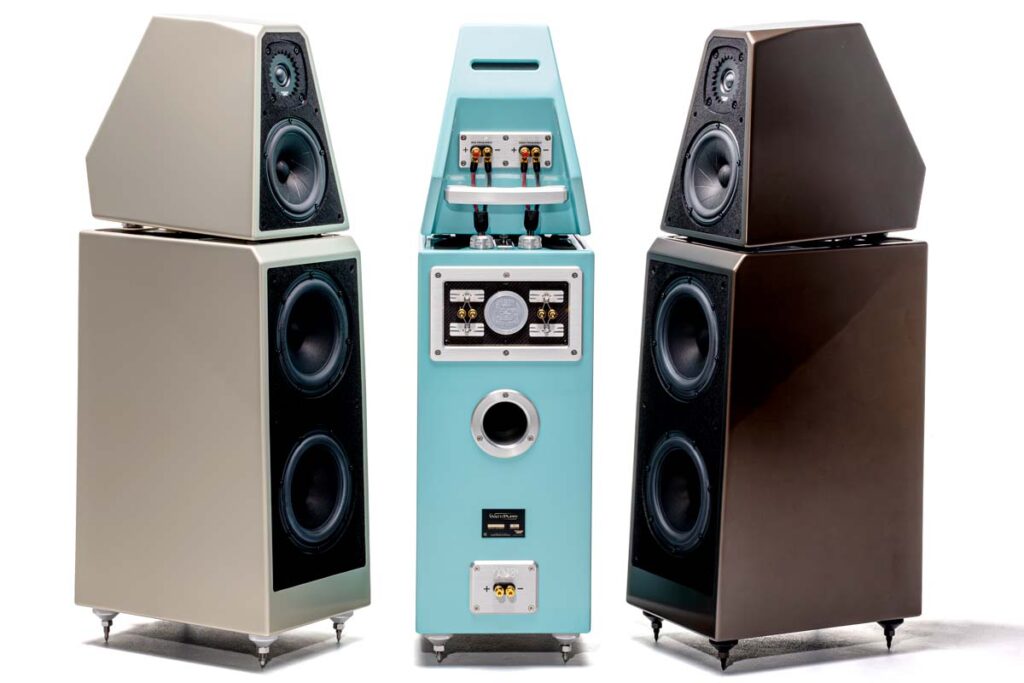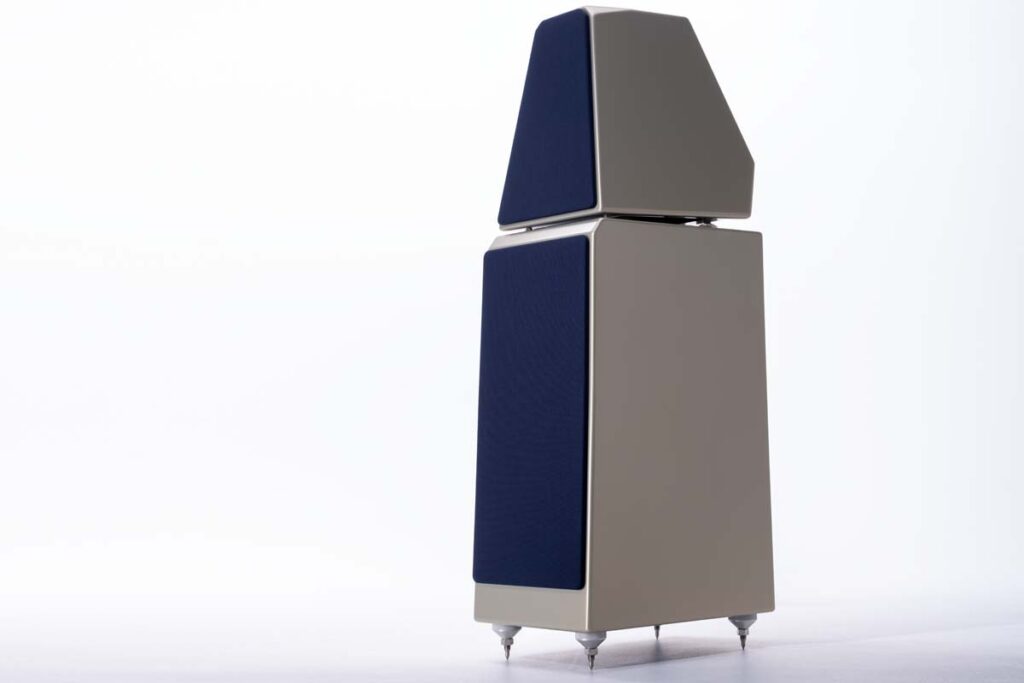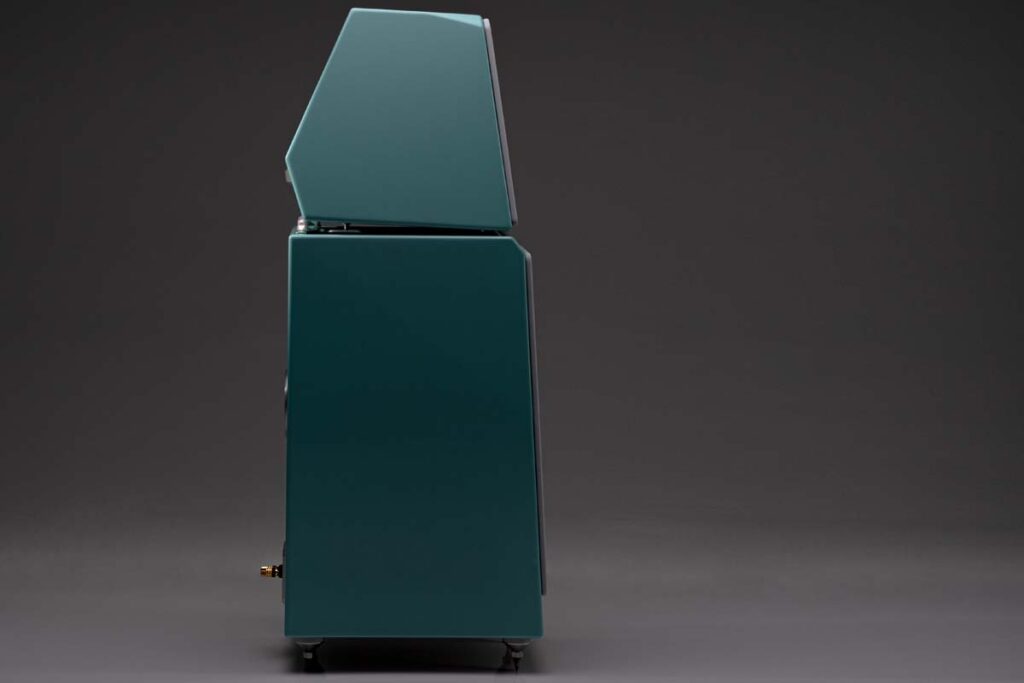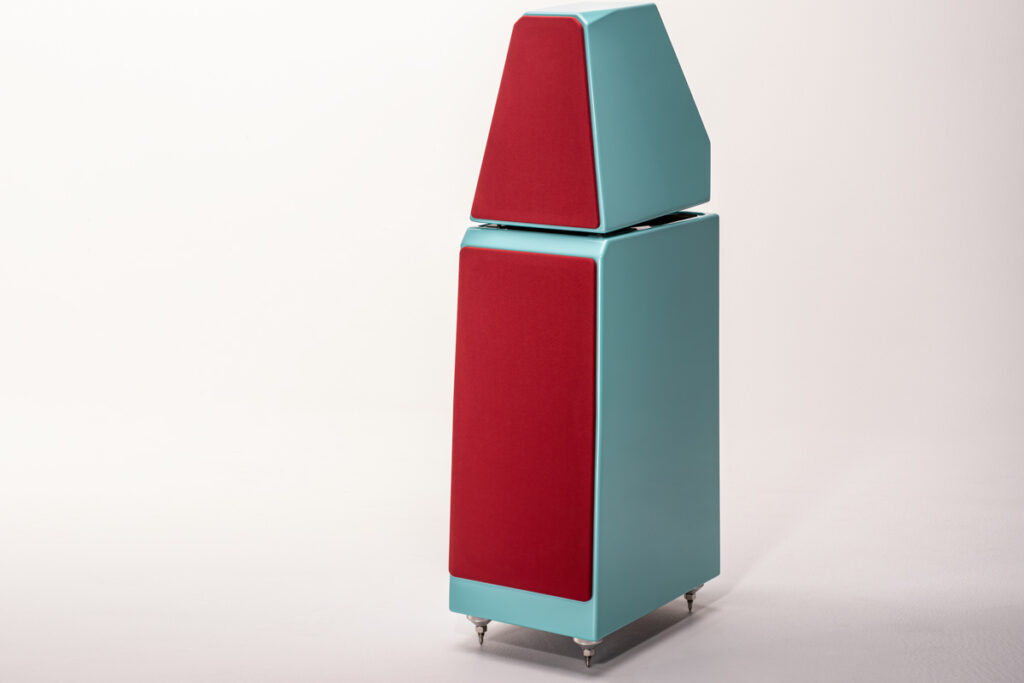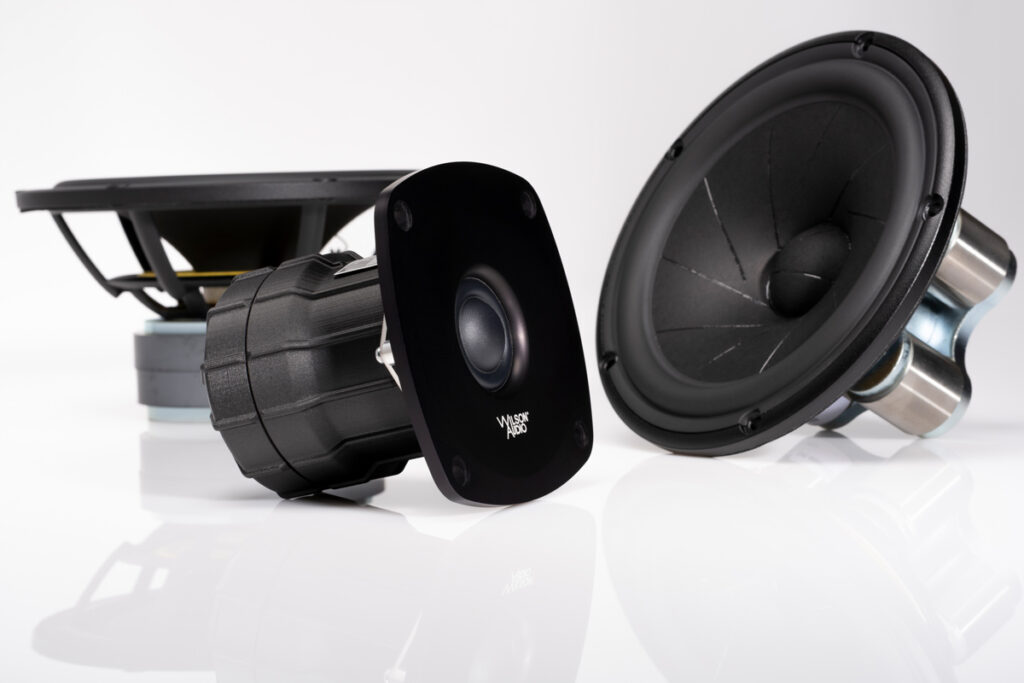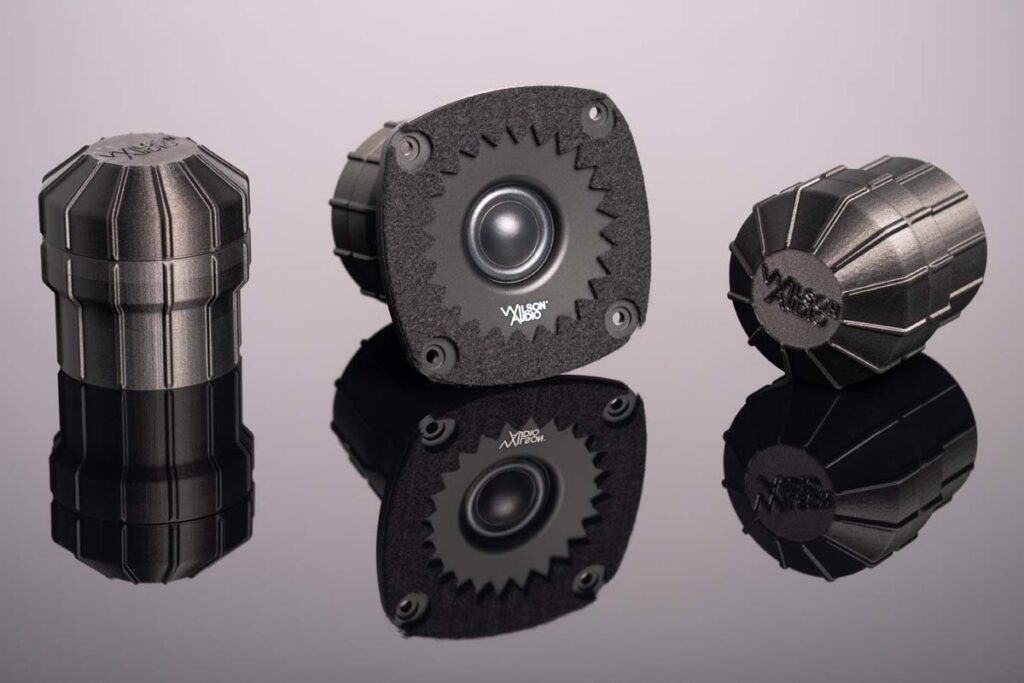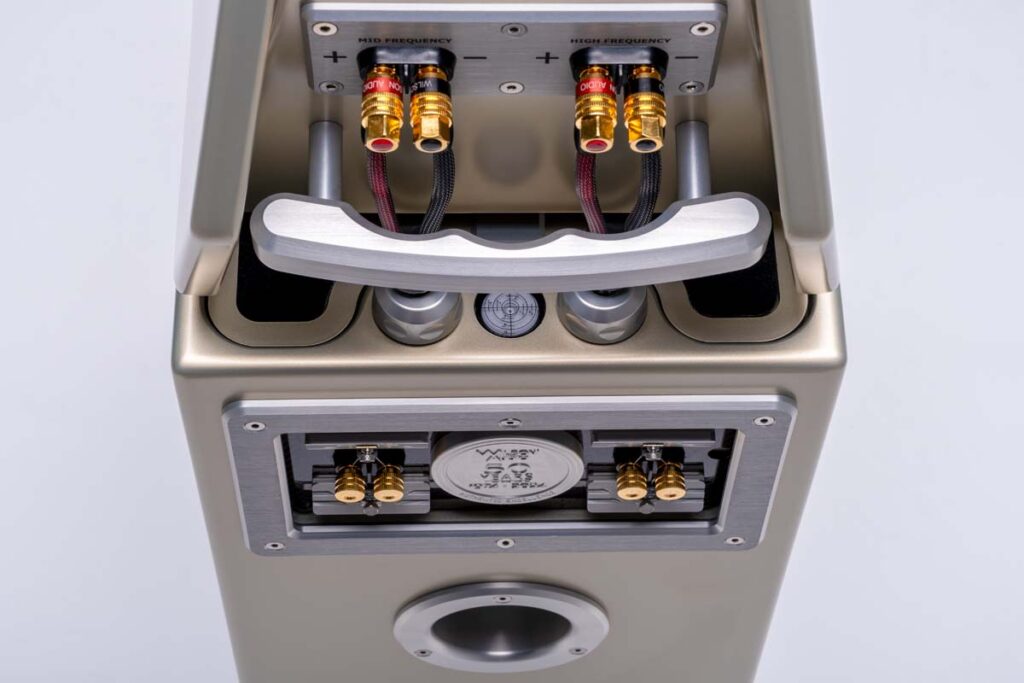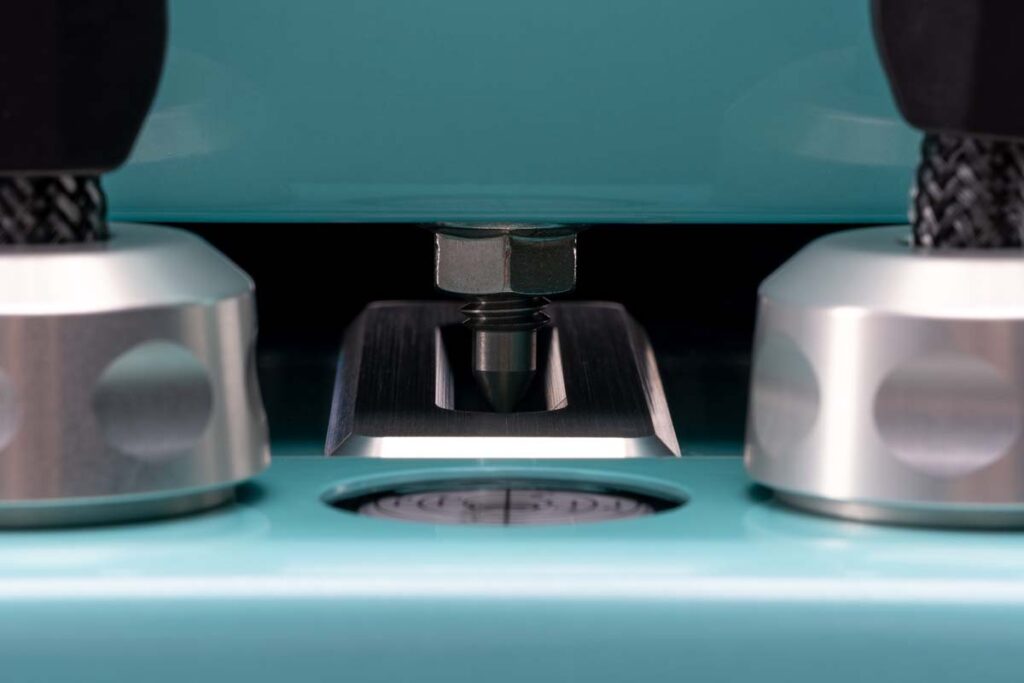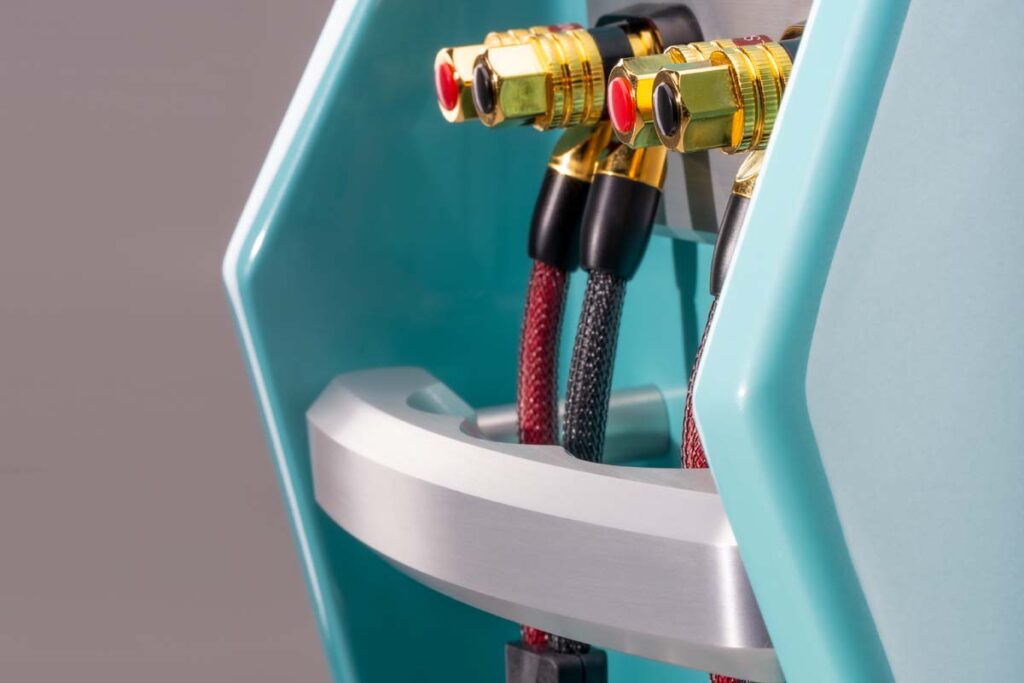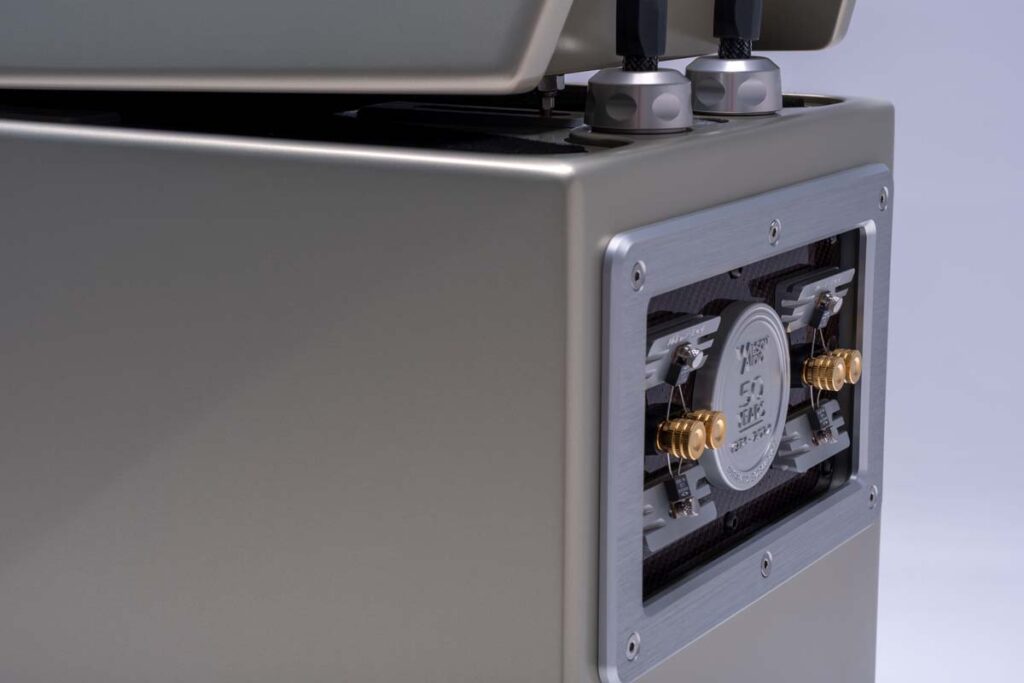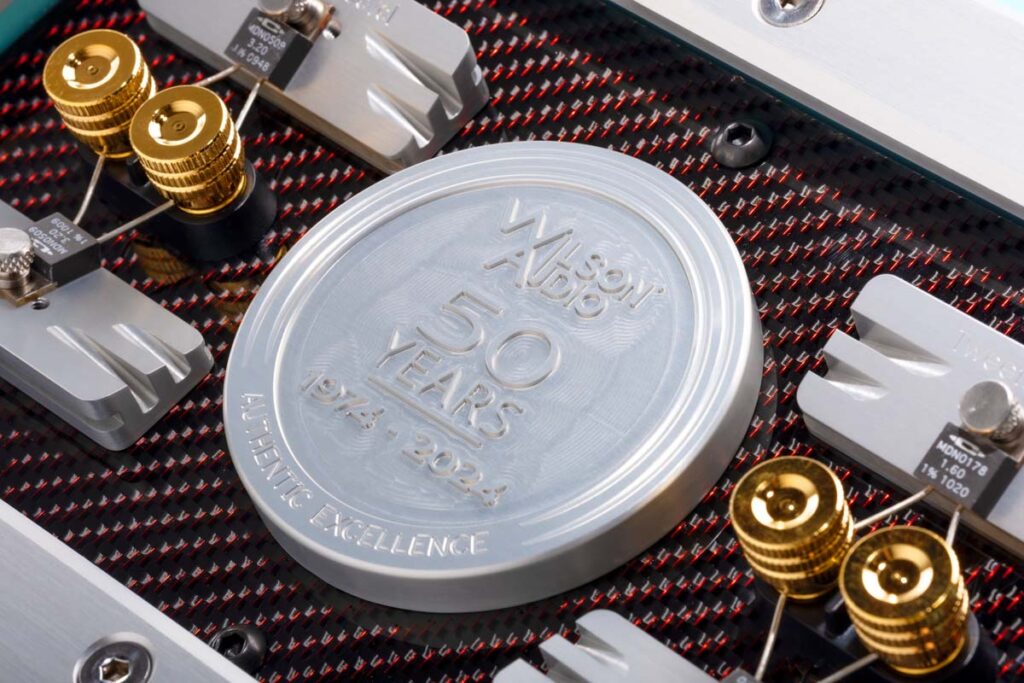It had been part of the lineup for more than two decades: the WATT/Puppy is arguably the most important loudspeaker in the history of Wilson Audio. Even though the name disappeared from the catalogs in 2011, its influence can still be clearly seen in the model range today. Now it’s back – and fits the picture like it’s always been there.
Can you call Wilson Audio the Ferrari of loudspeaker manufacturers? I know, I know: every comparison falls apart at some point, and I do realize that despite the sound of it, Provo is not in Italy. There are, however, a few striking similarities that connect the two. I’m not talking about obvious things like the fact that both manufacturers are firmly anchored in the high-end segment, or the combination of power, dynamics, and control that defines their character – such trivialities would lend themselves to almost any comparison pair. What I’m talking about is the aura that surrounds both brands: there’s a whole host of prestigious manufacturers out there, but few brand names can match the mystique of Ferrari or Wilson Audio, if any. More relevant to us, however, is a peculiarity in the model dynamics that unites the two: Ferrari’s brand image has always been carried by the large twelve-cylinder flagships – and yet it was often the comparatively “down-to-earth” V8 models like the 308 that have burned the brand name into the collective consciousness of car enthusiasts and, not least because of their sales figures, continue to significantly contribute to the company’s profitability to this day.
An Unlikely Legend
The situation at Wilson Audio is not dissimilar: ever since the original WAMM (Wilson Audio Modular Monitor) in 1976, the American manufacturer has defined itself technologically through its uncompromising gargantuan loudspeakers boasting adjustable dispersion geometry for all drivers – and has thus earned itself a legendary reputation just a few years after its founding. However, the true icon in the range has somewhat more modest origins: company founder Dave A. Wilson was so passionate about music that he wouldn’t be content with perfection in its reproduction side only: He also approached things from the production side, running his own audiophile label. And for this, he needed a small portable monitor that would meet the highest standards of resolution and fidelity. Because he could, he went ahead and built one himself, and because it turned out to be so dinky and adorable, he affectionately christened it “Wilson Audio Tiny Tot”.
Originally intended only for his own critical listening, the remarkable sound quality of the mini monitors did not go unnoticed for long in the master’s circle, and soon calls for series production became loud – a wish that Wilson was only too happy to fulfill. This marked the birth of the first half of the legend – that was in 1985 – with the second half following three years later. Being small as it was, deep bass reproduction was the one thing the little WATT couldn’t do – but many customers wanted a true full-range speaker with the same tonal qualities. Dave Wilson took the shortest route to the solution: rather than creating a “Big Tot” with more ways, more volume, and more bass, he simply placed the existing mini monitor on a low-frequency foundation in the form of a separate, twin 8-inch-woofer bass module that doubles as a speaker stand and which he named “Puppy.”
What seems like a product of chance quickly turned out to be one of the most resounding successes in the history of high-end hi-fi: we are not only talking about one of the best-selling high-end loudspeakers of all time, but also a model that popularized the concept of a “mid-high frequency module on a bass foot” on a large scale. The WATT/Puppy, which was last manufactured in 2011, had a major influence not only on the hi-fi world in general, but also, of course, on the brand’s own model range. The entire Wilson mid-range above the Sabrina X up to the Alexia V is still designed around the basic principle of a truncated pyramid resting on a low-frequency base – albeit today in much more advanced form. This makes sense – after all, the concept actually fits in way better with the design philosophy of the large Wilsons than one might think at first glance. The obvious advantage is that the mid-high frequency unit is coupled to the bass module at its corners, which are its quietest points, allowing the former to operate largely unaffected by the latter’s vibrations. But since you are already using spikes as connecting elements, it only makes sense to play around with the geometry of the coupling as well and thus – very much in line with the large, fully modular models – enable fine adjustment of the time alignment between the drivers.
Treat yourself
What, then, could be more fitting than celebrating the company’s 50th anniversary with a new edition of Wilson Audio’s most successful model, the one that truly made Wilson Audio a legend, accompanied the company’s fortunes for almost a quarter of a century, and continues to shape the brand’s image to this day? Since last year, Wilson Audio has once again included a loudspeaker with this historic name in its range. Positioned between the Sasha V and the smaller Sabrina X, the new WATT/Puppy is the smallest speaker from Provo to feature this classic two-part design. As is usual with Wilson Audio, “small” is of course relative. You have to place it right next to the Sasha to notice a difference in size – or really any difference at all. Visually, the first thing you notice, apart from the slightly more angular lines, is the absence of the “guard rails” that surround the head section of the Sasha, which in the case of the WATT/Puppy rests freely on the bass base.
Otherwise, the cabinet has shrunk – and significantly: the new model is slimmer in width and, above all, in depth. The trimmed figure also results in a weight reduction of a whopping 40 kilograms per side, making the speaker just about light enough that setup can be done by a single glutton for risk and punishment. Nevertheless, I would still strongly recommend a buddy with a pair of strong arms and watchful eyes. As with its larger siblings, the four-point mounting of yesteryear has now been reduced to three points, with a small “staircase” under the rear spike allowing the head section to be tilted – except for the lack of longitudinal adjustment and a downgrade from the “Acoustic Diode” feet to a conventional spike construction, the WATT/Puppy has the same features as its larger sister. This is especially true for the driver configuration, which is identical to the Sasha V: the same two 20 cm woofers in the bass, and the midrange unit also comes with the same CSC tweeter originally developed for the Alexx V as well as the 18 cm midrange driver with a quadruple Alnico magnet system.
Old virtues, new refinement
With a driver complement like this, I have no worries that the “mid-range” Wilson might be overwhelmed by our 55 square meter listening room. With a powerful amplifier such as a Burmester 216 behind them, the four 8-inch drivers effortlessly fill the room with the rich, robust, and tight bass that Wilson Audio is known for. They do reward patience and effort in positioning, but by no means require it –the bass already develops full authority and is also quite balanced even after a half-baked initial setup job. Of course, it still takes some maneuvering to get a handle on the odd room mode or suck-out, but we’re talking relatively large, obvious movements that don’t make any dramatic difference to the overall tonality apart from the problematic frequencies – and since walking the 70-kilogram speaker across the carpet on its spikes is reasonably easily even with the mid-high module attached, the procedure is surprisingly simple for a loudspeaker this size.
The low-frequency dress rehearsal takes place with “Tick-Tock” from Hans Zimmer’s Interstellar soundtrack. The organ tone, which begins at around the three-minute mark, repeats periodically and descends into the depths of the abyss, sending pleasant vibrations through both your stomach and the walls of the room. While I wonder why on earth anyone would need a larger speaker, it is not only the bass but also the presence range that catches my attention: The dense tapestry of sounds that breaks into the listening room in waves can sometimes come across as harsh and fatiguing – but there can be absolutely no talk of these two adjectives in what I am hearing here. The presence and high frequencies, for all their clarity, have a smoothness about them that I have never before experienced in a Wilson Audio. Have the Americans perhaps subtly reined in the treble? The powerful, direct approach, which can sometimes come across as a little harsh and relentless depending on the recording, is something I actually really appreciate about Wilson Audio, so I do a cross-check with “Seoul Music” by Yellow Magic Orchestra (Technodelic). A smorgasbord of synthetic and sampled percussion instruments spreads out remarkably freely in the room while a whispering voice hisses something in my ear that, while incomprehensible, still sounds like there shouldn’t be any children in the room. More importantly though, the snare drum has a really satisfying whipping clap to it, relentlessly driving the moderately fast piece forward, and the WATT/Puppy delivers explosive sounds as razor-sharp as ever. Of course, playing hard and direct is far from the only thing it can do: in Shuteen Erdenebaatar’s “Olden Days” (on her debut album Rising Sun), the body of her piano unfolds in all its tonal splendor, while the saxophone laments melancholically, accentuated by its crackling attack. With its film-noir-like chord progressions, the piece is anything but subtle; rather, it is kitschy in just the right way and therefore carries an intense, somewhat over-the-top mood – which the WATT/Puppy emphatically massages into the listener’s musical center. What can I say? Congratulations, it’s a Wilson Audio!
Accompanying Equipment
CD players: Ayon CD-3sx, Audio Note CD 3.1x, Accuphase DP-570 | Network players/streamers: Lumin P1, T+A PSD 3100 HV, Aavik SD-880 | Preamplifier: Accuphase C-2300 | Integrated amplifiers: Line Magnetic LM-88IA, Aavik I-580 | Power amplifier: Burmester 216 | Loudspeakers: Wilson Audio Sasha DAW, Marten Parker Quintet, Avantgarde Acoustic Colibri | Rack: Solidsteel, Finite Elemente, Creaktiv | Cables: AudioQuest, HMS, in-akustik, Vovox
Loudspeaker Wilson Audio WATT/Puppy
Concept: 3-way bass reflex floorstanding speaker with separate enclosures for bass and midrange/tweeter units | Driver complement: 1 x 25 mm CSC (Convergent Synergy Carbon) dome tweeter, 1 x 18 cm midrange driver with Alnico Quadramag motor, 2 x 20 cm woofers | Sensitivity (1 W/1 m): 89 dB | Impedance: 4 Ω (minimum 2.87 Ω at 86 Hz) | Frequency response (±3 dB in typical listening room): 26 Hz to 30 kHz | Recommended power: > 25 W | Finish: Galaxy Gray, GT Silver, Quartz, Carbon, Medio Grigio; numerous other colors available at extra cost | Special features: Construction and baffles made of X, S, and V material, capacitors developed and manufactured in-house | Dimensions (W/H/D): 30.5/105/47.5 cm | Weight: 72.5 kg | Warranty period: 10 years | Price per pair: around €50,000
Audio Reference
Alsterkrugchaussee 435
22335 Hamburg
Phone +49 40 53320359

